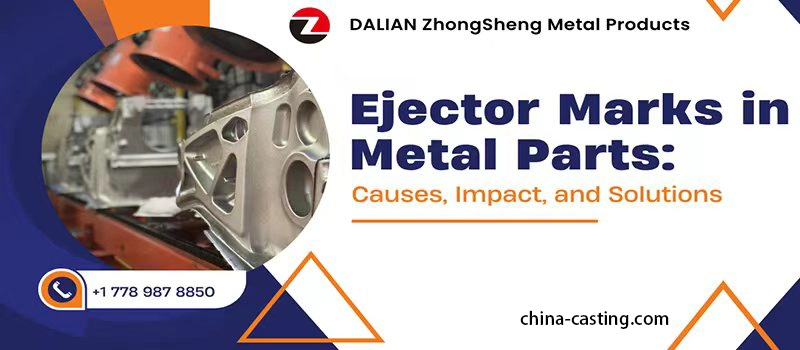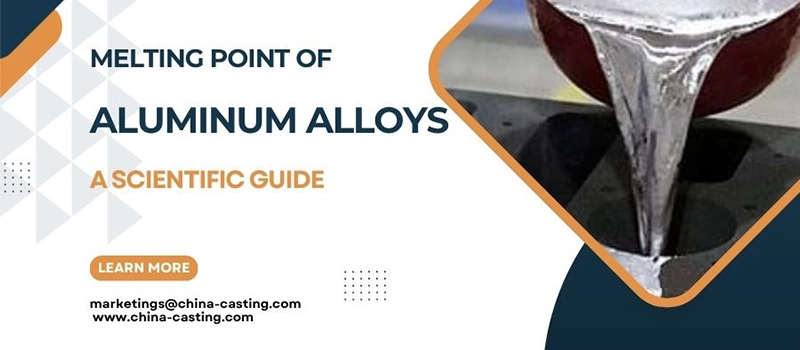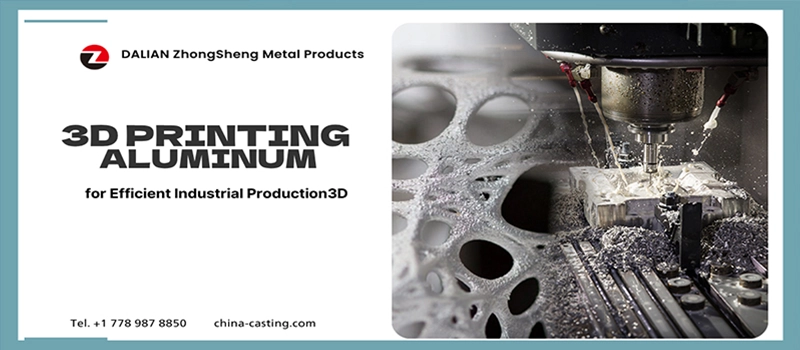Shot blasting is the foundation of high metal surface quality and long-term durability of metal parts.
Without proper surface treatment, even the strongest casting, forging, or machining component can fail—through rust, poor coating adhesion, or premature cracking.
These failures don’t always come from bad material or bad design.
They often come from surfaces that weren’t cleaned, strengthened, or roughened correctly before painting, welding, or assembling. Poor surface preparation means your coatings won’t hold, your parts will wear faster, and your customers will notice.
That’s why professional manufacturers rely on shot blasting.
It removes scale, rust, and residues while optimizing the surface for bonding and performance. Shot blasting is not just a cleaning step—it’s a critical process that improves every part of production and protects your reputation in the long run.
✅ What Is Shot Blasting in Metal Manufacturing?
Shot blasting is a surface cleaning and preparation process used to improve the surface quality and durability of metal parts. It works by forcibly projecting small steel particles—called shot—at high speed onto a metal surface. This impact removes surface rust, scale, old paint, sand residues from casting, and other contaminants.
But shot blasting does more than just clean. It roughens the surface in a controlled way, which is exactly what improves coating adhesion and extends the life of the part. In short, it prepares the surface so that the next production step—like painting, powder coating, welding, or assembling—is more reliable.
For industries like automotive, construction, agriculture, petrochemical, and mining, shot blasting is not an optional process—it’s a necessary step to ensure that metal parts meet both performance and longevity standards.

📌 Why It’s Used in Metal Manufacturing
We rely on shot blasting every day because it helps us:
- Ensure coatings stick properly
- Improve fatigue resistance and wear tolerance
- Create a consistent finish across all surfaces
- Extend the service life of both structural and moving parts
Whether we’re working on casting parts, forging parts, or machining components, shot blasting is part of our core process. It’s the bridge between raw production and final performance.
✅ Why Shot Blasting Is Important for Surface Quality and Durability
In metal manufacturing, it’s not enough for a part to simply “look clean.” If the surface isn’t properly prepared, it will affect how well coatings bond, how long the part lasts, and even how safely it performs under stress.
This is where shot blasting plays a critical role.
✅ Surface Quality Isn’t Cosmetic—It’s Functional
When we talk about surface quality, we’re referring to more than just appearance. A well-prepared surface ensures:
- Better adhesion of paints, powders, and protective coatings
- Consistent roughness, which helps with bonding and layering
- Removal of microscopic contaminants like casting sand, oxides, and machining burrs
Without proper surface treatment, coatings may peel, rust may develop prematurely, or cracks can form during operation. Shot blasting eliminates these risks by resetting the surface to a clean, controlled condition.
This gives us full control over how a part will perform in real-world conditions—whether it’s exposed to moisture, vibration, abrasion, or high temperatures.
✅ Durability Starts at the Surface
Durability isn’t just built into the material—it’s also developed during processing. A poorly treated surface creates weak spots that lead to:
- Faster wear and tear
- Coating failures
- Micro-cracks and fatigue under stress
Shot blasting directly addresses these issues by:
- Strengthening the outer layer of the metal through controlled impact
- Evenly distributing surface stress to prevent premature cracking
- Extending the functional life of both high-load and precision parts
We’ve seen this time and time again: two identical parts, one shot blasted and one untreated. The untreated part shows wear, corrosion, and failure months earlier under the same conditions.
✅ It’s Not Just About Cleanliness — It’s About Reliability
Many companies make the mistake of thinking that manual cleaning or chemical pickling is “good enough.” But these methods don’t provide the surface roughness control, strengthening effects, or bonding consistency that shot blasting offers.
That’s why for industries that require high performance—automotive, aerospace, heavy equipment, petrochemical, agriculture—shot blasting has become the industry standard.
🎯 Key Outcomes When Shot Blasting Is Done Right:
- Up to 50% increase in coating life
- Reduction in field failure rates
- More stable results across large batch production
- Improved safety margins for critical-use parts
- Smoother downstream processes: coating, assembly, welding
✅How the Shot Blasting Process Works: Step-by-Step
Shot blasting isn’t just about “cleaning” metal—it’s a carefully controlled surface treatment process that delivers consistent results, batch after batch. By understanding how it works, we gain full control over surface quality, coating adhesion, and the durability of metal parts.
Here’s a breakdown of how the process works inside a modern manufacturing environment like ours.

✅ Step 1: Selecting the Right Shot Media
The process begins with choosing the right abrasive material, typically:
- Steel Shot (spherical) – for smoother finishes and peening
- Steel Grit (angular) – for aggressive cleaning and rougher textures
The size, shape, and hardness of the media affects the final surface finish. For casting or forging, we may use coarse grit for deeper cleaning. For machined parts, fine shot creates a more refined surface profile.
✅ Step 2: Feeding Parts into the Blast System
Parts are loaded into automated systems such as:
- Tumble blast machines for small parts
- Spinner hangers for larger or more complex shapes
- Blast rooms for oversized components
Once inside, the machine’s blast wheels spin at high speed to throw the shot media onto the part surfaces. Air blast systems are used for more precise or manual control.
✅ Step 3: Blasting & Surface Transformation
As the abrasive hits the surface, several things happen:
- Rust, scale, and oxides are physically removed
- Surface roughness is increased in a controlled way
- Residual stresses are balanced, reducing fatigue failures
The result is a clean, reactive surface that’s ideal for coating, bonding, or welding. This improves both coating adhesion and the durability of the finished part.
✅ Step 4: Separation and Recycling
After blasting, the media and dust are collected. A separator filters reusable shot from broken particles and debris. Cleaned media is then recycled back into the system, keeping costs and waste low.
Some systems can reuse steel shot over 1000 times before replacement is needed, making it a highly efficient and sustainable surface treatment method.
✅ Step 5: Post-Blast Inspection and Quality Control
After blasting, each part is inspected to confirm:
- Surface cleanliness (ISO 8501 or SSPC-SP standards)
- Consistent roughness (Ra measurement tools)
- No embedded shot or media residue
- Readiness for the next process (coating, welding, etc.)
This stage ensures that all metal surface quality requirements are met before the part moves forward.
✅Top 8 Benefits of Shot Blasting You Can’t Ignore
Whether you’re dealing with castings, forgings, or machined parts, shot blasting is more than just surface cleaning—it’s a powerful value-added step that directly improves performance, quality, and lifespan.
Here are the 8 key benefits you gain when shot blasting is correctly applied in your metal manufacturing process.
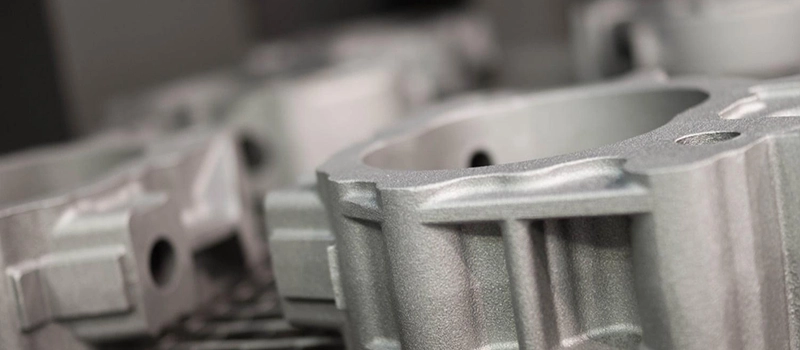
✅ 1. Improves Coating Adhesion
The roughened surface created by shot blasting provides excellent mechanical bonding for:
- Powder coating
- Liquid paint
- Galvanizing
- Plating
A smoother or contaminated surface causes paint to peel or bubble. Shot blasting ensures consistent grip, which means fewer defects and lower rejection rates.
✅ 2. Increases Fatigue Strength
Shot blasting creates a compressive stress layer on the part’s surface. This helps absorb shock and vibration, reducing the chance of fatigue cracks or sudden failure—especially important in load-bearing parts.
✅ 3. Extends Product Lifespan
By removing scale, rust, and stress risers, parts last longer in:
- Corrosive environments
- High-friction assemblies
- Thermal cycling applications
This directly translates into reduced maintenance, fewer replacements, and better performance over time.
Need Help? We’re Here for You!
✅ 4. Reduces Risk of Coating Failure
Coatings rely on uniform surface roughness and cleanliness. Shot blasting delivers that. This means:
- No flaking or blistering
- No coating delamination under load
- Consistent coverage across all parts
This keeps your parts looking and performing better in the long run.
✅ 5. Detects Surface Defects Early
After blasting, the bare metal surface reveals:
- Cracks
- Porosity
- Cold shuts
- Shrinkage marks
This allows quality teams to detect issues before coating, assembly, or shipping—saving you from costly returns or warranty claims.
✅ 6. Enables Consistent Finishing for Mass Production
Shot blasting delivers a repeatable result across large batches. Whether you’re doing 50 parts or 5,000, you can achieve:
- Uniform appearance
- Reliable bonding surfaces
- Stable roughness (Ra)
This is vital for mass production quality control.
✅ 7. Prepares for Critical Assembly Steps
In applications where parts will be welded, coated, or assembled under pressure, shot blasting:
- Removes weld spatter zones
- Cleans sealing faces
- Enhances bonding areas
That means better seal integrity, fewer leaks, and stronger assemblies overall.
✅ 8. Improves Customer Satisfaction
With better surface finishes, longer durability, and fewer failures, shot blasting enhances your reputation:
- Fewer complaints
- Lower return rates
- More repeat orders
Customers notice when parts arrive clean, consistent, and well-prepared—especially in OEM and B2B supply chains.
✅Shot Blasting vs. Sandblasting: Which Is Better for Metal Parts?
At first glance, shot blasting and sandblasting might seem similar—they both use abrasive media to clean metal surfaces. But when it comes to surface quality and durability, the differences are significant—and choosing the wrong one can lead to costly production mistakes.
Let me break it down clearly so you can decide which process is right for your metal parts.

✅ What’s the Main Difference?
| Factor | Shot Blasting | Sandblasting |
|---|---|---|
| Abrasive Media | Steel shot or grit | Sand or fine grit |
| Impact Force | High (wheel or air propulsion) | Lower (typically air-blown) |
| Surface Result | Consistent rough texture | Finer finish, less depth |
| Ideal for | Heavy-duty cleaning, structural parts | Light cleaning, soft metals, small items |
| Durability Effect | Increases fatigue resistance, lifespan | Minimal durability effect |
| Material Recyclability | Reusable steel shot (1000+ cycles) | Sand breaks down quickly, more waste |
✅ Why Shot Blasting Is Superior for Industrial Metal Parts
When the goal is to improve durability, coating adhesion, and ensure parts can handle pressure, wear, and corrosion—shot blasting is the better choice.
It:
- Removes deeper contaminants and scale
- Creates a reliable surface profile for coatings to grip
- Strengthens the outer layer of the metal
- Offers full control over Ra (roughness average)
In contrast, sandblasting is more suited to decorative or low-impact tasks—like cleaning soft metals, refurbishing wood, or creating a matte finish on aluminum signs.
✅ Risk of Choosing the Wrong Process
If you’re working with cast iron, forged steel, or precision-machined parts, using sandblasting can result in:
- Inadequate surface prep
- Poor coating performance
- Reduced part durability
- Contaminated finish
And in heavy industries like automotive, mining, or construction, that translates to early part failure and increased warranty costs.
✅ When to Use Each Process
| Use Case | Recommended Process |
|---|---|
| Cast steel components | ✅ Shot Blasting |
| Structural forged parts | ✅ Shot Blasting |
| Surface prep before powder coating | ✅ Shot Blasting |
| Light cleaning of brass or copper | Sandblasting (if needed) |
| Restoration of painted items | Sandblasting |
If your part needs strength, reliability, or a professional-grade coating finish—always choose shot blasting.
✅How Shot Blasting Enhances Coating Adhesion
Shot blasting plays a critical role in ensuring coating adhesion.
No matter how advanced the coating system is, if the metal surface isn’t properly prepared, the finish will fail. Dust, rust, oil, or even a surface that’s too smooth can prevent coatings from bonding as they should.
This is where shot blasting becomes essential. It does two things at once: it cleans the surface thoroughly and roughens it to create a profile that allows primers, powder coatings, and paints to anchor securely.
The roughness created by blasting isn’t random—it’s controlled to match the coating requirements. A slightly textured surface helps coating material flow evenly and adhere more tightly, which is especially important for applications exposed to vibration, pressure, or extreme weather.
Without proper blasting, common problems include peeling, blistering, uneven finishes, and early corrosion under the coating layer. These failures don’t just affect appearance—they lead to returns, downtime, and unhappy customers. But when blasting is done right, coatings last longer, bond better, and perform more consistently.
In high-volume production, this consistency is even more important. Every blasted part receives the same surface treatment, which means fewer surprises in your paint line and more reliable quality control. It’s not just a preparation step—it’s an investment in coating performance and long-term durability.
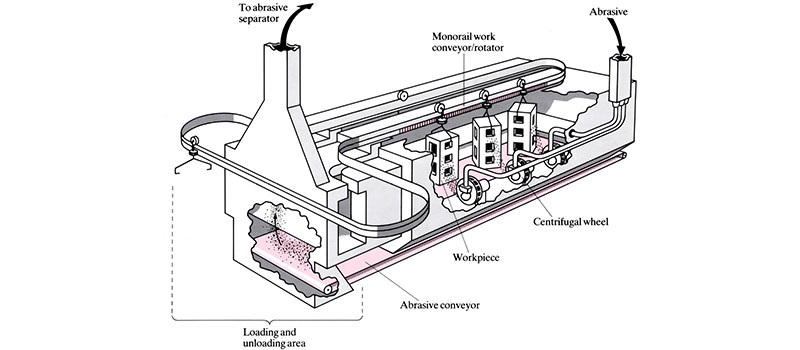
✅Frequently Asked Questions About Shot Blasting
❓ What’s the main purpose of shot blasting in metal manufacturing?
Shot blasting removes rust, scale, and surface impurities while preparing the metal for coating or assembly.
It improves both surface quality and the long-term durability of metal parts.
❓ Is shot blasting the same as sandblasting?
No. Shot blasting uses steel shot or grit for deeper, more uniform cleaning, while sandblasting uses finer, softer media. Shot blasting is more suitable for cast, forged, or machined parts that require strength and coating performance.
❓ What types of parts require shot blasting?
Shot blasting is essential for:
- Casting parts (to remove sand and oxides)
- Forged parts (to strip scale and improve fatigue strength)
- Machined parts (to clean and prep the surface for coating)
❓ Does shot blasting increase part durability?
Yes. By removing weak surface layers and applying controlled roughness, shot blasting increases fatigue resistance and coating life, which extends overall part lifespan.
❓ How does shot blasting help with paint or powder coating?
It creates a clean, textured surface that allows coatings to anchor securely. This prevents peeling, flaking, or blistering during service.
Need Help? We’re Here for You!
❓ Is shot blasting environmentally friendly?
Shot blasting is mechanical, not chemical, and most systems recycle the steel shot hundreds of times. Dust collection systems keep emissions controlled, making it one of the cleaner surface treatment options.
❓ How can I know if my parts need shot blasting?
If you’re experiencing coating failures, corrosion issues, or inconsistent finishes, chances are the surface preparation is insufficient. Shot blasting helps correct that—especially for industrial-grade applications.
Conclusion
Shot blasting isn’t just a surface treatment—it’s a performance upgrade.
By removing rust, scale, and residues while creating a controlled surface profile, shot blasting prepares metal parts for real-world conditions. It improves coating adhesion, ensures consistent surface quality, and extends the durability of metal parts across casting, forging, and machining applications.
Whether you’re producing industrial components or precision-finished parts, investing in proper shot blasting isn’t optional—it’s essential for reliability, repeatability, and long-term product success.


